
Investigating Polygons - Mathematics Instructional Plan
- Subject:
- Mathematics
- Material Type:
- Lesson Plan
- Provider:
- VDOE
- Author:
- VDOE
- Date Added:
- 10/07/2024

Investigating Polygons - Mathematics Instructional Plan

Combining Polygons - Mathematical Instructional Plan

Subdividing Polygons - Mathematics Instructional Plan
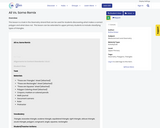
This lesson is a task in the Geometry strand that can be used for students discovering what makes a correct polygon and what does not. This lesson can be extended to upper primary students to include classifying types of triangles.https://goopenva.org/courses/1-g-all-vs-only-some

Combining Polygons -- Mathematics Instructional Plans (MIPs) help teachers align instruction with the 2016 Mathematics Standards of Learning (SOL) by providing examples of how the knowledge, skills and processes found in the SOL and curriculum framework can be presented to students in the classroom.

This performance task is designed for third grade students and higher to compare and contrast a group of items based on attributes or actions classified into at least two sets and subsets. The items being classified are polygons. The use of algorithms and flowcharts is also a key component of the performance task.

Angles in Polygons Mathematics Instructional Plan

In Unit 5, students explore concepts of perimeter and geometry. Students have gradually built their understanding of geometric concepts since Kindergarten, when students learn to name shapes regardless of size and orientation. They also learn to distinguish between flat and solid shapes. In Grade 1, students’ understanding grows more nuanced, as they learn to distinguish between defining and non-defining attributes, as well as compose and decompose both flat and solid shapes. In Grade 2, students draw and identify shapes with specific attributes. All of this understanding gets them ready for Grade 3, in which students begin their journey of measuring those attributes, including area (addressed in Unit 4), and perimeter (explored here), as well as classification of shapes based on attributes into one or more categories.
Students begin the unit by defining perimeter as the boundary of a two-dimensional shape and measure it by finding its length. For a polygon, the length of the perimeter is the sum of the lengths of the sides. They develop their understanding of perimeter by measuring it with a ruler, finding it when all side lengths are labeled, and then finding it when some information about the length of a shape’s side lengths needs to be deduced, such as when a rectangle only has its length and width labeled. Students then solve real-world and mathematical problems, both given a figure and without one, involving perimeters of polygons (3.MD.8). With this understanding of perimeter, they are able to compare the measurement of area and perimeter of a rectangle, seeing that a rectangle with a certain area can have a variety of perimeters and, conversely, a rectangle with a certain perimeter can have a variety of areas, connecting the additional cluster content of perimeter to the major cluster content of area. Students then solve various problems involving area and perimeter. The last topic of the unit explores geometry. Students build on Grade 2 ideas about polygons and their properties, specifically developing and expanding their knowledge of quadrilaterals. They explore the attributes of quadrilaterals and classify examples into various categories (3.G.1), then explore attributes of polygons and classify examples into various categories, now including quadrilaterals. Students also draw polygons based on their attributes. Students next use tetrominoes and tangrams to compose and decompose shapes.
In this unit, students reason abstractly and quantitatively, translating back and forth between figures and equations in the context of perimeter problems (MP.2). Students will also construct viable arguments and critique the reasoning of others as they develop a nuanced understanding of the difference between area and perimeter, as well as when they classify shapes according to their attributes and justify their rationale (MP.3). Lastly, students will use appropriate tools strategically by using rulers to measure the side lengths of polygons to find their perimeter, as well as use rulers and right angle templates to find attributes of shapes to determine their classification (MP.5).
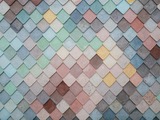
This resource can be found in Illustrative Mathematics website. There are a few modifications that were necessary to support the original lesson. Suggested modifications: Instead of providing with an activity, I strongly suggest activating student's background knowledge with a book on "The Greedy Triangle" by Marilyn Burns which encourages literacy in the curriculum. Students often are motivated to write a children's book or a poem, as it allows them to think outside the box. Secondly, the suggested activities will allow students to explore and have a mathematical dialogue about different polygons, and discourage rote memorization of geometric shapes.

Investigating polygons -- Mathematics Instructional Plans (MIPs) help teachers align instruction with the Mathematics Standards of Learning (SOL) by providing examples of how the knowledge, skills and processes found in the SOL and curriculum framework can be presented to students in the classroom.
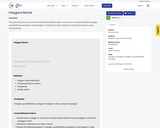
This geometry lesson is a remix from Illustrative Mathematics. In this lesson, students identify triangles, quadrilaterals, pentagons and hexagons. Students are also required to make these shapes using manipulatives. https://tasks.illustrativemathematics.org/content-standards/tasks/1506
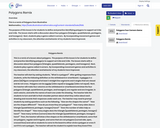
This is a remix of Polygons from Illustrative Mathematics, https://tasks.illustrativemathematics.org/content-standards/tasks/1506.The purpose of this lesson is for students to define and practice identifying polygons to support sol 3.12a and 3.12b. The lesson starts with a discussion about four polygons (triangles, quadrilaterals, pentagons, and hexagons). Next, students play a game called 4 corners. By incorporating movement games and activities in my classroom, the attention and behavior of my students have improved.
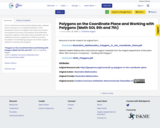
This is a task from the Illustrative Mathematics website that is one part of a complete illustration of the standard to which it is aligned. Each task has at least one solution and some commentary that addresses important aspects of the task and its potential use. An additional source is added from VDOE to provide a foundation for identifying polygons and other support related to working with polygons.

This is a lesson that integrates programming in Python or Scratch into 3rd grade math. The focus of this lesson is on polygons.SOL's:Math 3.12The student will a) define polygon; b) identify and name polygons with 10 or fewer sides; and c) combine and subdivide polygons with three or four sides and name the resulting polygon(s).CS 3.2 3.2 The student will construct programs to accomplish tasks as a means of creative expression using a block- or text-based programming language, both independently and collaboratively a. using sequencing; b. using loops (a wide variety of patterns such as repeating patterns or growing patterns); and c. identifying events.

Subdividing polygons -- Mathematics Instructional Plans (MIPs) help teachers align instruction with the Mathematics Standards of Learning (SOL) by providing examples of how the knowledge, skills and processes found in the SOL and curriculum framework can be presented to students in the classroom.

Students will create flowers using polygons with 3-10 sides, classify and arrange them, based on different attributes (SOL CS 4.5). This activity would be done with 4th graders, but it could be modified for 3rd or 5th grades. The students would work both individually and collaboratively.

Combining and subdividing polygons -- Mathematics Instructional Plans (MIPs) help teachers align instruction with the Mathematics Standards of Learning (SOL) by providing examples of how the knowledge, skills and processes found in the SOL and curriculum framework can be presented to students in the classroom.